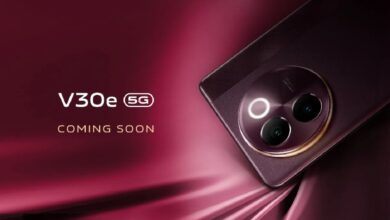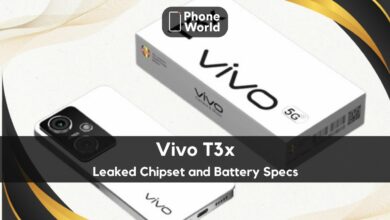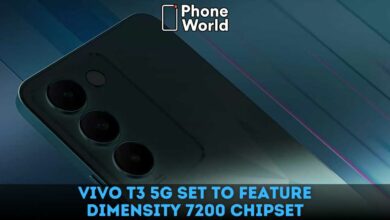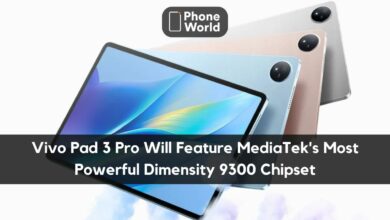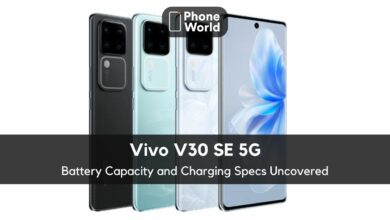Accelerating vivo’s 5G journey: Interview with Tamrakar Rakesh, 5G Standard Expert, vivo
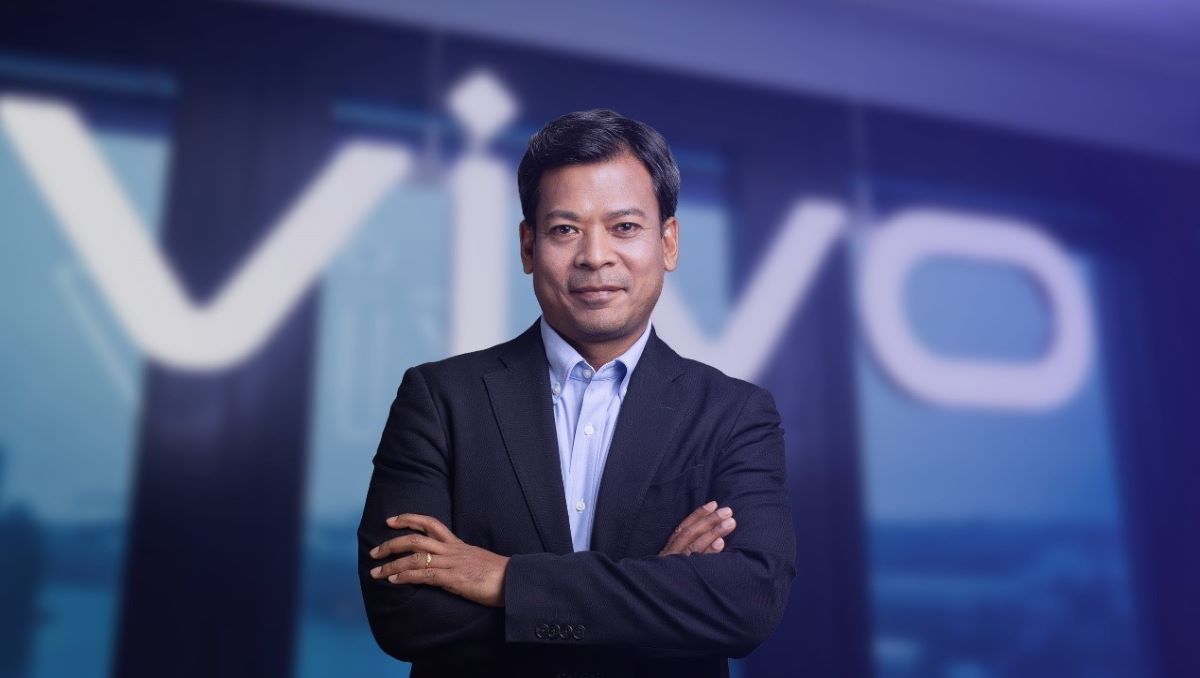
5G connectivity has become a dire need of the modern era. Consequently, smartphone manufacturers are focusing on acquiring the best 5G technology for their devices. In line with that, the Chinese company vivo has been constantly innovating the 5G infrastructure. For this purpose, they have hired the renowned 5G expert, Tamrakar Rakesh. Currently, he serves as a 5G standard expert at vivo. At the company, Tamrakar manages 5G physical layer system design, research, and standardization. Furthermore, the official is also involved in developing 5G (NR) radio access technologies which include data channel, control channel, pilot signals, multi-antenna technologies, and mmWave technologies. An interview was conducted with Tamarkar Rakesh to know more about the 5G landscape of the company. The Q/A session of this exclusive interview is mentioned below.
Accelerating vivo’s 5G journey: Interview with Tamrakar Rakesh, 5G Standard Expert, vivo
1) What are some of vivo’s most notable contributions to mobile industry?
vivo focuses on innovations in hardware design and the software ecosystem to improve terminal performance and user experiences. vivo invests heavily in 5G connectivity to reach the stage of product realization and getting this technology into the hands of consumers.
One of vivo’s most notable contributions includes the standardization and performance enhancement of Rel-17 multi-SIM technology. Previously, an incoming voice call from one competing 5G SIM card would interrupt the data flow of the other, resulting in abysmal performance as one would cancel the other. Having discovered early that consumers preferred 5G smartphones with dual-SIM card slots for greater flexibility in different usage scenarios, vivo researchers successfully sought to negate the clash, leading to the existence of multi-SIM 5G smartphones on the market today.
Always innovating with the end user in mind, the Rel-16 terminal power-saving technology patented by vivo manages to simplify terminal actions. It lowers normal energy consumption by creating a new “dozing” state, allowing the device software to become inactive while the hardware becomes idle. 5G smartphones can now intelligently catch every chance to take a rest, thereby prolonging battery life.
Another issue raised by 5G technology is the increasing number of antennas and components installed inside a smartphone. However, users are relentless in their pursuit for ultra-thin smartphones. vivo’s proprietary 3D stack design uniquely encases all this industry-leading technology to allow new 5G smartphones to be even slimmer than its 4G predecessors.
2) vivo aims to empower consumers by providing access to 5G connectivity at every price point. How far has vivo managed to do that?
vivo is working on making 5G devices ever more accessible and affordable and releases over 20 models of 5G devices covering all price ranges from 1,000 – 6,000 RMB. To democratize and popularize the powerful capabilities of 5G to the masses, vivo’s5G smartphone product lineups have a broad spectrum, ranging from professional photography, high performance, selfie taking, e-sports etc., to serve various kinds of user needs around the world.
3) How can 5G help improve connectivity? Will 5G be rather an optimization of 3G/4G, or is there a revolutionary element?
5G is not a simple optimization of 3G/4G, it incorporates many breakthrough technologies, for example it utilizes millimeter wave spectrum with abundant frequency resources to support reliable communication. It also employs massive MIMO technology with beam-based operation. 5G supports wide range of frequency bands with very wide bandwidth, to provide support to services such as eMBB (enhanced mobile broadband), URLLC (ultra-reliable low latency communication), mMTC (massive machine type communication).
5G allows a new kind of digital infrastructure tovirtually connect everything and everyone. It supports not only the smartphone type of device, but also reliable communication for industry applications, autonomous driving, UAV (unmanned aerial vehicle) communication etc. A whole lot of new applications from education, healthcare, industry, infrastructure, entertainment, public services, environment monitoring can be supported. 5G will provide humankind with the foundation to establish smart cities with comprehensive internet-of-things technologies that can efficiently restructure our lived environments and redefine our everyday lifestyle.
4) What is vivo’s vision and future plans on 5G?
Wireless mobile technologies are developing fast, a new generation of technology comes out every 10 years, currently academia and industries are coming together to define visions, goals and researching technologies to meet the targets. As 5G commercial networks are gradually deployed around the world and progressively advanced devices increasingly permeate every aspect of our livelihoods, thought leaders of the mobile industry are already looking forward to its next generation: 6G. vivo is part of a select few that hold the extensive expertise and in-depth understanding of consumer needs to turn this vision into a reality. To kickstart this exciting new era, the vivo Communications Research Institute released two white papers in late 2020 that break down the facets of 6G technology. Providing a diverse set of hypothetical scenarios and case studies, vivo communication standard experts have analyzed how the sixth generation will embody much more than technological transformation as it merges our physical and digital worlds.
5) What are the major challenges that need to be tackled on the way to the technological maturity of 5G?
Commercial 5G networks are being rolled out globally with rapid speed. The network operates mainly in two spectrum ranges named as FR1 (Frequency Range 1) and FR2 (Frequency Range 2). FR1 includes frequency bands up to around 7GHz while FR2 includes frequency bands from 24GHz to 52GHz, which is also known as millimeter wave band. Currently, FR1 based technology is much more mature than FR2 based technology. 5G as a complex technology can support extremely wide bandwidth, hence the power consumption at the base stations and 5G devices is a big challenge. To fully unlock 5G’s powerful capabilities, another challenge could be the development of new applications.
6) According to you, what should be done to ensure 5G will become a true global standard?
The 5G technical standard was formed by a series of innovative R&D efforts led by companies such as vivo. The 5G products or services consumers are presented with today are actually a refined conglomeration of technologies formulated by the 3rd Generation Partnership Project (3GPP), a consortium of international telecom standards organizations that provide a stable platform for collaboration.
Currently, more than 150 commercial 5G networks have been deployed globally and there are more than 500 million active users with more than 100 million 5G enabled smartphones shipped every quarter. The deployment and the commercialization of 5G should be a joint effort by multiple parties depending on factors including network infrastructure readiness, availability of 5G devices etc. From the perspective of a 5G device manufacturer, affordable smartphones should be rolled out to attract users in developing countries to help enhance the popularization of the 5G network globally.
7) How exactly vivo’s 5G would affect our life?
vivo has invested heavily in 5G connectivity to reach the stage of product realization and getting this technology into the hands of consumers. It goes without saying that 5G can facilitate limitless applications, on both industrial and consumer levels. For tech-savvy individuals accustomed to heavy device usage loads, 5G will be a game changer in elevating their collective digital devices into powerful, cloud-synced gateways capable of tapping into the most resource-intensive applications and data streams. Hundreds of thousands of industries are currently undergoing paradigm shifts as enterprises and countries race to propel society into the next phase of technological transformation. Besides, the industries are becoming integrated, owing to the reliable and streamlined network between machines, devices, and other digital objects. With many creative applications ranging from augmented reality/virtual experiences to vehicle-to-everything driverless cars and many more, 5G will provide humankind with the foundation to establish smart cities with comprehensive internet-of-things technologies that can efficiently restructure our lived environments and redefine our everyday lifestyles.
8) What would be the difference between 5G and 6G? What timelines we are looking at for 6G?
5G supports eMBB, URLLC, mMTC services, enabling higher data rate than 4G, low latency communication for industrial application, and IoT devices. 6G is able to achieve the free connection between the physical and digital world. 6G will improve the degree of freedom in connection in domains of space, time, range, sensory, interaction and finance. The 6G communication system will be an efficient system for communication, computing, storage and data integrated services. For example, the peak data rate of 6G will be faster for 5 times than 5G; the latency will be shortened by 10 times and the reliability will be enhanced by 100 times.
Tentatively, standardization of 6G mobile technology could start in 2025 and complete first version by 2028. That means 6G will be ready for deployment by 2030.
Also, check out? vivo Y33s Redefines Technological and Design Driven Innovation with Promising Features
PTA Taxes Portal
Find PTA Taxes on All Phones on a Single Page using the PhoneWorld PTA Taxes Portal
Explore NowFollow us on Google News!